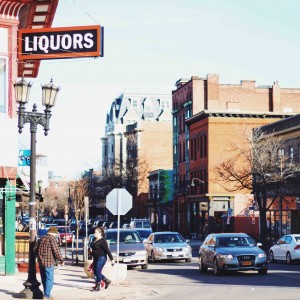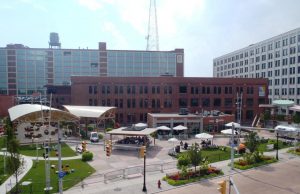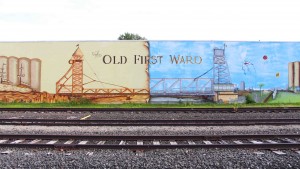How Buffalo’s Neighborhoods Got Their Names
Some well-known Buffalo neighborhood names are self-explanatory—we’re looking at you, Downtown Buffalo and the West Side. Others made us scratch our heads and go “wha’?” We came up with this key to some of the neighborhood names you need to know and what makes each and every one of them so special.

Allentown
Look no further than a well-trod cattle path to find the name of one of Buffalo’s artsiest neighborhoods. When early Buffalo farmer Lewis Fallie Allen accepted neighbor Thomas Day’s offer of grazing land, Allen Street was born. The rest is literally history. Allen was one of the founders of the Buffalo Historical Society and Forest Lawn Cemetery as well as being President Grover Cleveland’s uncle.
Central Park
Prominent Buffalo businessman Lewis Bennett started work on Central Park, one of the earliest planned neighborhoods, beginning in 1889. Its proximity to Delaware Park, one of the jewels in Buffalo’s crown of Olmsted-designed parks, makes it a desirable place to live still. Typical of Buffalo’s architectural stock, its wide, tree-lined streets feature homes in an impressive range of styles.

The Hydraulics
The Hydraulics neighborhood—which is on the State and National Registers of Historic Places—traces its name to 1827 when the Buffalo Hydraulic Association, a private endeavor, incorporated to create waterpower for a manufacturing district. A deep industrial and working class history informs this neighborhood, which has been redeveloped into one of Buffalo’s entertainment hotspots, Larkinville.
Black Rock
Black Rock, in Northwest Buffalo, was, in fact, named after a black rock, says Doreen DeBoth, of the Black Rock Historical Society. The rock ledge protruded about 200 feet into the Niagara River. The stone was “chert,” a gray/black limestone. Before it was cleared to make way for the Erie Canal in 1825, the rock had been used as a native fishing ground, and a landing for the Black Rock Ferry to Canada. Remaining strata can be seen along Route 190 in several spots.

The Old First Ward
At its 1832 incorporation, the City of Buffalo consisted of five political wards. The number of wards expanded with the population; the First Ward remained defined by the neighborhood south of downtown, along the Buffalo River—it was historically populated mainly by working-class, immigrant families. When “districts” replaced “wards,” the “old” was added, says Tim Bohen, author of “Against the Grain: the History of Buffalo’s Old First Ward.”
The Valley
This area, east of the OFW, earned its moniker because of its inaccessibility. Until they were removed in 1992, the only vehicular and pedestrian access to the neighborhood was via one of five bridges. The area, about one square mile, can now be reached at grade level. Nearby, Tesla’s manufacturing facility has replaced the Republic Steel Plant. Formerly dominated by heavy industry, the area is defined by the Buffalo River to the west and rail lines to the south, west and northwest.

